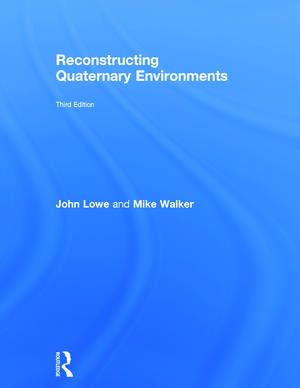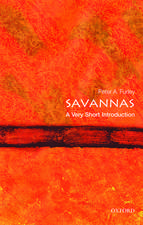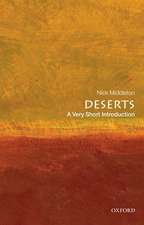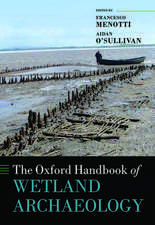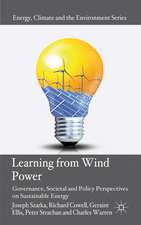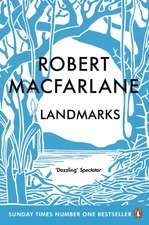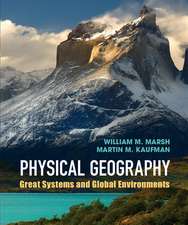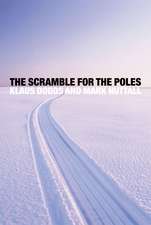Reconstructing Quaternary Environments
Autor J. John Lowe, Michael Walkeren Limba Engleză Hardback – 24 oct 2014
This comprehensive and dynamic textbook is richly illustrated throughout with full-colour figures and photographs. The book will be of interest to undergraduates, postgraduates and professionals in Earth Science, Environmental Science, Physical Geography, Geology, Botany, Zoology, Ecology, Archaeology and Anthropology
| Toate formatele și edițiile | Preț | Express |
|---|---|---|
| Paperback (1) | 465.63 lei 22-36 zile | +41.95 lei 6-12 zile |
| Taylor & Francis – 24 oct 2014 | 465.63 lei 22-36 zile | +41.95 lei 6-12 zile |
| Hardback (1) | 1058.45 lei 43-57 zile | |
| Taylor & Francis – 24 oct 2014 | 1058.45 lei 43-57 zile |
Preț: 1058.45 lei
Preț vechi: 1414.50 lei
-25% Nou
Puncte Express: 1588
Preț estimativ în valută:
202.57€ • 210.41$ • 168.26£
202.57€ • 210.41$ • 168.26£
Carte tipărită la comandă
Livrare economică 03-17 februarie 25
Preluare comenzi: 021 569.72.76
Specificații
ISBN-13: 9780415740753
ISBN-10: 0415740754
Pagini: 568
Ilustrații: 654
Dimensiuni: 189 x 246 x 28 mm
Greutate: 1.43 kg
Ediția:Revised
Editura: Taylor & Francis
Colecția Routledge
Locul publicării:Oxford, United Kingdom
ISBN-10: 0415740754
Pagini: 568
Ilustrații: 654
Dimensiuni: 189 x 246 x 28 mm
Greutate: 1.43 kg
Ediția:Revised
Editura: Taylor & Francis
Colecția Routledge
Locul publicării:Oxford, United Kingdom
Public țintă
UndergraduateCuprins
1. The Quaternary record 2. Geomorphological evidence 3. Lithological evidence 4. Biological evidence 5. Dating methods 6. Approaches to Quaternary stratigraphy and correlation 7. Global environmental change during the Quaternary
Recenzii
"This is a splendid compendium of what we know and understand about Quaternary environments, and how we study them. Lowe and Walker are to be congratulated on this fully updated version of their popular textbook. Reconstructing Quaternary Environments continues to be a must for Quaternary sciences courses at all university levels and an indispensable reference source for professional geoscientists. This new edition is beautifully illustrated and provides diverse examples from around the world; it is a real tour de force of Quaternary studies."
Professor Lewis Owen, Department of Geology, University of Cincinnati, USA
"The literature in Quaternary environmental and climatic change has increased exponentially during the last decades and now covers a wide range of archives, proxies and modelling studies. In this revised and updated 3rd edition, Lowe and Walker have successfully integrated the wealth of new data from around the world. The up-to-date information and references, the elegant language, the explanatory notes after each chapter and full-colour illustrations and photos all serve to make this wonderful textbook a treasure trove for students, researchers and anyone else interested in finding out more about the exciting subject of Quaternary climate and environmental change."
Professor Barbara Wohlfarth, Department of Geological Sciences, Stockholm University, Sweden
"The third edition of Reconstructing Quaternary Environments by John Lowe and Mike Walker continues the impressive standards set by its two predecessor volumes. Well written, extensively referenced and with numerous clear diagrams and colour figures, it sets the standard for textbooks on Quaternary science and the techniques to reconstruct environmental change. It should be essential reading for students and will be an invaluable reference for all those with an interest in the Quaternary."
Professor Colm O'Cofaigh, Department of Geography, Durham University, UK
"A good reference for courses (if complemented by a work with better focus on the human record) and a general introduction to this topic. Summing Up: Recommended. Upper-division undergraduates, graduate students, researchers/faculty."
CHOICE, E. Delson, CUNY Herbert H. Lehman College
Professor Lewis Owen, Department of Geology, University of Cincinnati, USA
"The literature in Quaternary environmental and climatic change has increased exponentially during the last decades and now covers a wide range of archives, proxies and modelling studies. In this revised and updated 3rd edition, Lowe and Walker have successfully integrated the wealth of new data from around the world. The up-to-date information and references, the elegant language, the explanatory notes after each chapter and full-colour illustrations and photos all serve to make this wonderful textbook a treasure trove for students, researchers and anyone else interested in finding out more about the exciting subject of Quaternary climate and environmental change."
Professor Barbara Wohlfarth, Department of Geological Sciences, Stockholm University, Sweden
"The third edition of Reconstructing Quaternary Environments by John Lowe and Mike Walker continues the impressive standards set by its two predecessor volumes. Well written, extensively referenced and with numerous clear diagrams and colour figures, it sets the standard for textbooks on Quaternary science and the techniques to reconstruct environmental change. It should be essential reading for students and will be an invaluable reference for all those with an interest in the Quaternary."
Professor Colm O'Cofaigh, Department of Geography, Durham University, UK
"A good reference for courses (if complemented by a work with better focus on the human record) and a general introduction to this topic. Summing Up: Recommended. Upper-division undergraduates, graduate students, researchers/faculty."
CHOICE, E. Delson, CUNY Herbert H. Lehman College
Descriere
The years since the second edition of Reconstructing Quaternary Environments have seen an exponential increase in the volume of literature written on the Quaternary. New methods and technological advances have given rise to a number of multi-disciplinary and interdisciplinary research groups able to offer startling insights in to short- and long- term climatic changes.
This third edition has been revised and updated to address these developments and to freshly examine the various forms of evidence that can be used to establish the history and scale of environmental changes during the Quaternary. Building on the format previously established it reviews the geomorphological, lithological and biological evidence that compromises the Quaternary record, describes and evaluates dating methods and considers how these elements can be bought together in a robust stratigraphic framework. A new final chapter demonstrates how results using these different methods and approaches can by synergised to provide an overview of global environmental change. Compelling new evidence from the integration of polar ice and marine isotopes records allow the authors to examine a series of themes relating to climate change at a number of spatial scales and over a series of time intervals that become progressively shorter towards the present day.
Clearly Illustrated to demonstrate key concepts and with progressive learning techniques employed throughout this new edition will be of interest to undergraduate students and professionals of Earth Science, Environmental Science, Physical Geography, Geology, Botany, Zoology, Ecology, Archaeology and Anthropology.
This third edition has been revised and updated to address these developments and to freshly examine the various forms of evidence that can be used to establish the history and scale of environmental changes during the Quaternary. Building on the format previously established it reviews the geomorphological, lithological and biological evidence that compromises the Quaternary record, describes and evaluates dating methods and considers how these elements can be bought together in a robust stratigraphic framework. A new final chapter demonstrates how results using these different methods and approaches can by synergised to provide an overview of global environmental change. Compelling new evidence from the integration of polar ice and marine isotopes records allow the authors to examine a series of themes relating to climate change at a number of spatial scales and over a series of time intervals that become progressively shorter towards the present day.
Clearly Illustrated to demonstrate key concepts and with progressive learning techniques employed throughout this new edition will be of interest to undergraduate students and professionals of Earth Science, Environmental Science, Physical Geography, Geology, Botany, Zoology, Ecology, Archaeology and Anthropology.
